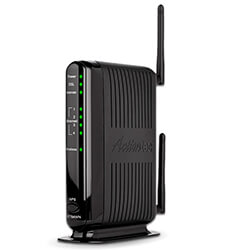Modem
Modem is short for "Modulator-Demodulator." It is a hardware component that allows a computer or another device, such as a router or switch, to connect to the Internet. It converts or "modulates" an analog signal from a telephone or cable wire to digital data (1s and 0s) that a computer can recognize. Similarly, it converts digital data from a computer or other device into an analog signal that can be sent over standard telephone lines.
The first modems were "dial-up," meaning they had to dial a phone number to connect to an ISP. These modems operated over standard analog phone lines and used the same frequencies as telephone calls, which limited their maximum data transfer rate to 56 Kbps. Dial-up modems also required full use of the local telephone line, meaning voice calls would interrupt the Internet connection.
Modern modems are typically DSL or cable modems, which are considered "broadband" devices. DSL modems operate over standard telephone lines, but use a wider frequency range. This allows for higher data transfer rates than dial-up modems and enables them to not interfere with phone calls. Cable modems send and receive data over standard cable television lines, which are typically coaxial cables. Most modern cable modems support DOCSIS (Data Over Cable Service Interface Specification), which provides an efficient way of transmitting TV, cable Internet, and digital phone signals over the same cable line.
NOTE: Since a modem converts analog signals to digital and vice versa, it may be considered an ADC or DAC. Modems are not needed for fiber optic connections because the signals are transmitted digitally from beginning to end.
 Test Your Knowledge
Test Your Knowledge